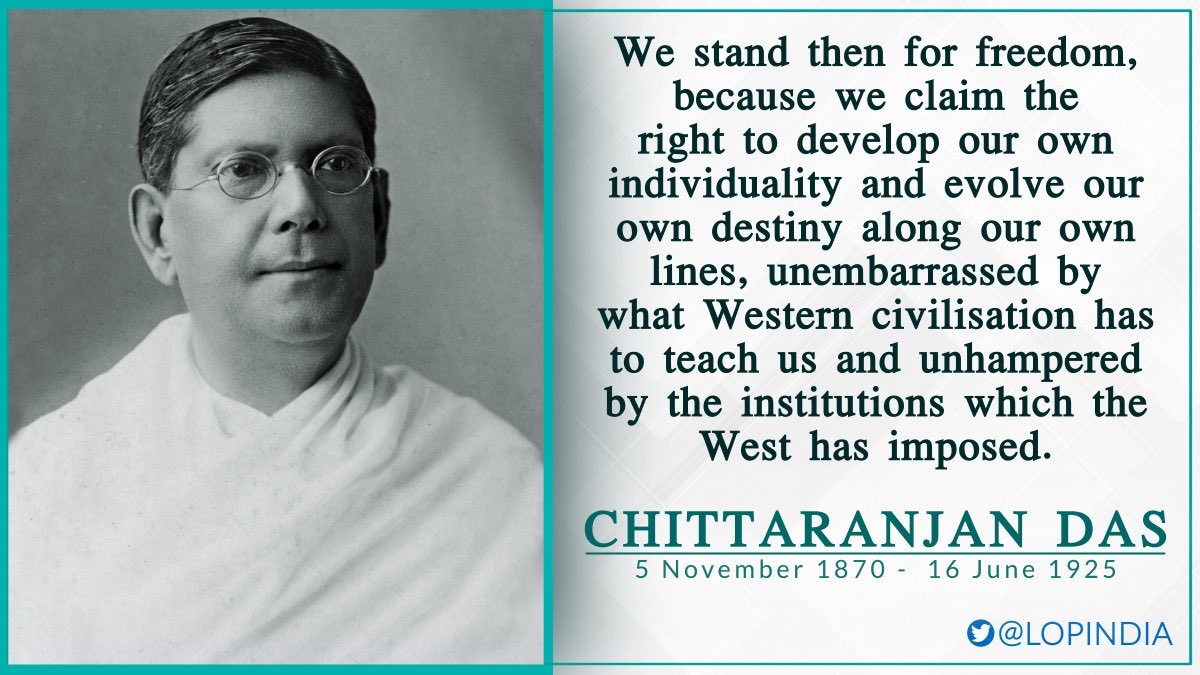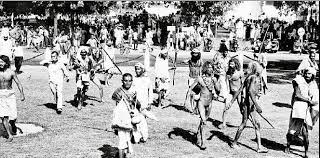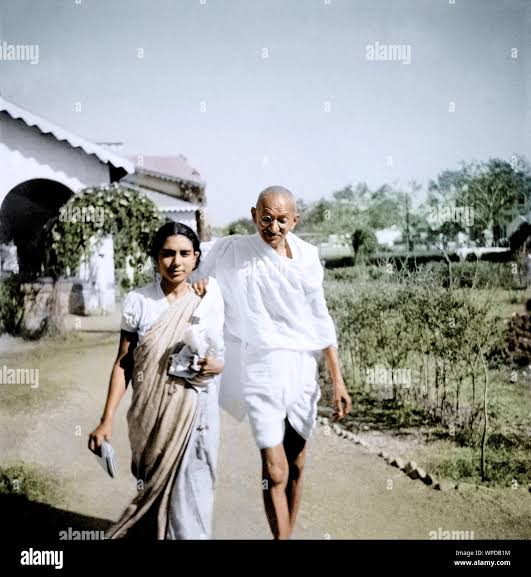
#ForgottenHeroes
#Deshbandu
At one time, his clothes were tailored and washed in Paris and he maintained a permanent laundry in Paris to ship his clothes to Calcutta. He sacrificed all this luxury when he became attached to the Freedom Movement.
For long, it was said that MKG

#Deshbandu
At one time, his clothes were tailored and washed in Paris and he maintained a permanent laundry in Paris to ship his clothes to Calcutta. He sacrificed all this luxury when he became attached to the Freedom Movement.
For long, it was said that MKG


propagated the idea of Village Development and Cottage Industries...but the truth?
It was 1917 and in the Calcutta session, #DeshbandhuChittaranjanDas, put forward a plan for village reconstruction, which was to entail steps such as establishment of local self-government,
It was 1917 and in the Calcutta session, #DeshbandhuChittaranjanDas, put forward a plan for village reconstruction, which was to entail steps such as establishment of local self-government,
co-operative credit societies as well as re-starting the cottage industry.
Das was born on 5 November 1870 in Calcutta, completed his graduation from Presidency College in 1890. The same year, he went to England to qualify for the ICS, which was dominated by the British.
Das was born on 5 November 1870 in Calcutta, completed his graduation from Presidency College in 1890. The same year, he went to England to qualify for the ICS, which was dominated by the British.
Unfortunately, he failed. As a result, he opted to join the legal profession. Das practiced law at The Honourable Society of the Inner Temple at London in England.
While in England, Das along with Aurobindo & Sarojini Naidu campaigned for Dadabhai Naoroji to help win a seat in
While in England, Das along with Aurobindo & Sarojini Naidu campaigned for Dadabhai Naoroji to help win a seat in
the House of Commons. Naoroji became the first Asian in 1892 to become a part of the Westminster.
Two years later, Das came back to India and started practising as a barrister at Calcutta High Court.
Das left his lucrative practice and plunged headlong into politics during the
Two years later, Das came back to India and started practising as a barrister at Calcutta High Court.
Das left his lucrative practice and plunged headlong into politics during the
non-cooperation movement against the British and he wore that barrister robes again after 13 years and successfully defended Aurobindo in Alipore Bomb Case.
Not many know that Chittaranjan was actively involved in Anushilan Samithi during its founding years along with P. Mitter.
Not many know that Chittaranjan was actively involved in Anushilan Samithi during its founding years along with P. Mitter.
Aurobindo, In his Uttarpara speech, gratefully acknowledged that Chittaranjan Das broke his health to save him.
He was a leading figure in Bengal during the Non-Cooperation Movement of 1919–1922, and initiated the ban on British made clothes, setting an example by burning his
He was a leading figure in Bengal during the Non-Cooperation Movement of 1919–1922, and initiated the ban on British made clothes, setting an example by burning his
own European clothes and wearing Khadi clothes.
On 4 February 1922, Gandhi suddenly ended the movement following the Chauri Chaura incident. Das was firmly against Gandhi’s move.
At the Gaya session of the party in December 1922, Das was chosen as the Congress president, but
On 4 February 1922, Gandhi suddenly ended the movement following the Chauri Chaura incident. Das was firmly against Gandhi’s move.
At the Gaya session of the party in December 1922, Das was chosen as the Congress president, but
resigned later when his plan to introduce non-cooperation from within the councils failed to go through.
Alongside Motilal Nehru, Das then established the Swaraj party within the Congress. The aim of the newly-founded party was to contest in the Central Legislative Assembly in
Alongside Motilal Nehru, Das then established the Swaraj party within the Congress. The aim of the newly-founded party was to contest in the Central Legislative Assembly in
1923 and derail the British rule through anti-government activities within the council chambers.
He brought out a newspaper called Forward and later changed its name to Liberty as part of his support for various anti-British movements and Subhash Chandra Bose was its editor.
He brought out a newspaper called Forward and later changed its name to Liberty as part of his support for various anti-British movements and Subhash Chandra Bose was its editor.
Chittaranjan started a monthly journal named Narayana, and many eminent writers such as Sharat Chandra Chattopadhyay, Bipin Chandra Pal and Hariprasad Shastri contributed their writings in the journal.
Also Das maintained close contact with Bipin Chandra Pal and Aurobindo Ghosh
Also Das maintained close contact with Bipin Chandra Pal and Aurobindo Ghosh
and helped them in publishing the Bande Mataram, an English weekly for propagating the ideals of swaraj.
When the Calcutta Municipal Corporation was formed, he became its first mayor.
In 1925 Chittaranjan's health began to fail due to overwork, and went to Darjeeling to
When the Calcutta Municipal Corporation was formed, he became its first mayor.
In 1925 Chittaranjan's health began to fail due to overwork, and went to Darjeeling to
recuperate his health in May 1925, where he passed away due to severe fever on 16 June 1925 in Darjeeling.
His mortal remains were brought to Calcutta for the funeral. Gandhi led the funeral procession.
Das, a few years before his death, gifted his house & the adjoining lands
His mortal remains were brought to Calcutta for the funeral. Gandhi led the funeral procession.
Das, a few years before his death, gifted his house & the adjoining lands
to the nation to be used for the betterment of the lives of women. At present, it is a big hospital called Chittaranjan Seva Sadan and has gone from being a women's hospital to one where all specialties are present.
#ForgottenHeroes
#DeshbandhuJayanti
#VANDEMATARAM
#ForgottenHeroes
#DeshbandhuJayanti
#VANDEMATARAM
• • •
Missing some Tweet in this thread? You can try to
force a refresh














